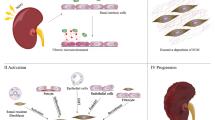Abstract
In view of the increasing number of patients undergoing kidney dialysis or transplant every year, a survey of the literature on renal protective medicinal plants was undertaken. Most of them are from traditional Chinese medicine (TCM). Although many of the medicinal herbs reported have not been investigated in terms of active chemical ingredients, some do have compounds well characterized. They fall into a wide range of structures. Several groups of compounds with well established activities are discussed. These include: antioxidant phenolic compounds like tannins, flavonoids, isoflavonoids, unsaturated organic acids and lignans; circulation enhancing compounds like saponins, and basic alkaloids with multiple targets (G-protein coupled receptors). Also presented are proinflammatory and antiinflammatory fatty acids like linoleic (n-6) and α-linolenic (n-3) acids, respectively. Attention is also drawn to the plants containing nephrotoxic aristolochic acid. Different directions of future research are also presented. We hope that this review may provide some leads for new drug discovery and development, and more rational application of TCM.
Similar content being viewed by others
References
Jiangsu New Medical College. Traditional Chinese medicine dictionary (Vols 1, 2 and 3). Shanghai; Shanghai Science and Technology Publishing House; 1979.
Hsu HY, Chen YP, Hong M, eds. The chemical constituents of oriental herbal drugs (Vol 1). Long Beach. CA: Oriental Healing Arts Institute of USA; 1982.
Hsu HY, Chen YP, Hong M, eds. The Chemical Constituents of Oriental Herbal Drugs (Vol 2). Long Beach, CA: Oriental Healing Arts Institute of USA; 1985.
Huang KC. The Pharmacology of Chinese Herbs. 2nd ed. CRC Press; 1999.
Hsu HY. How to treat yourself with Chinese Herbs. Los Angeles, CA: Oriental Healing Arts Institute; 1980.
Kuwaki T. Chinese herbal therapy, a guide to its principles and practice. Long Beach, CA: Oriental Healing Arts Institute; 1990.
Hsu HY. Oriental meteria medica: a concise guide. Long Beach, CA: Oriental Healing Arts Institute, 1986.
Lien EJ, Lien LL. Structure side-effect sorting of drugs IV: Nephrotoxicities. J Clin Hosp Pharm 1980;5:225–250.
Lien EJ. SAR side effects and drug design, Marcel Dekker, Inc, 1987.
Goldstein RS, ed. Mechanisms of injury in renal disease and toxicity. CRC Press: 1994.
Walker RJ, Fawcett JP. Drug nephrotoxicity — the significance of cellular mechanism. Prog Drug Res 1993;41:51–94.
Lo SHK, Mo KL, Wong KS, Poon SP, Chan CK, Lai CK, et al. Aristolochic acid nephropathy complicating a patient with focal segmental glomerulosclerosis. Nephrol Dial Transplant 2004;19:1913–1915.
Lee S, Lee T, Lee B, Choi H, Yang M, Ihm CG, et al. Fanconi syndrome and subsequent progressive renal failure caused by a Chinese herb containing aristolochic acid. Nephrology 2004;9:126–129.
Vanherweghem JL, Depierreux M, Tielemans C, Abramowicz D, Dratwa M, Jadoul M, et al. Rapidly progressive interstitial renal fibrosis in young woman: association with slimming regimen including Chinese herbs. Lancet 1993;341:387–391.
Wang R, Kong J, Wang D, Lien LL, Lien EJ. A survey of Chinese ingredients with liver protection activities. Chin Med 2007;2:1–8.
Kuo CL, Wang RB, Shen LJ, Lien LL, Lien EJ. G-protein coupled receptors: SAR analyses of neurotransmitters and antagonists. J Clin Pharm Ther 2004;29:279–298.
Huang SSC, Komatsu KI, Ren SSJ, Lien LL, Lien EJ. Phytohormones and antioxidents in Chinese herbs and natural food. Int J Orient Med 2001;26:66–86.
Wu H, Wang RB, Kuo CL, Lien LL, Lien EJ. SAR analysis of phytoandrogenic compounds in traditional medicines. Int J Orient Med 2003;28:13–34.
Lien EJ, Lien LL, Wang J. Longevity depends on a balance between proinflammatory and anti-inflammatory factors: Use of Chinese herbs and natural products. Current Drug Disc Technol 2010;7:13–21.
Lien EJ, Ren SJ, Komatsu KI, Hwang SSC, Lee AD and Lien LL. Phytochemical and SAR analysis of essential linoleic (n-6) and α-linolenic (n-3) acids in Chinese herbs and dietary supplement. Int J Orient Med 2000;25:171–186.
Adams JD Jr, Lien EJ, Parker K. Extracellular and intracellular cell signaling—an introduction. Invited chapter by the Royal Society of Chemistry, 2010.
Gao H, Wang FZ, Lien EJ, Trousdale MD. Immunostimulating polysaccharides from Panax notoginseng. Pharm Res 1996;13:1196–1200.
Gao H, Wang FZ, Lien EJ, Trousdale MD, and Hsu CS. Immunostimulating polysaccharides from Viola yedoensis. Int J Orient Med 1996;21:1–9.
Zhou J, Yan X, Xie G, Milne GWA. Traditional Chinese medicines: molecular structures, natural sources and applications. 2nd ed. Hampshire: Ashgate: 2003.
Author information
Authors and Affiliations
Corresponding author
Rights and permissions
About this article
Cite this article
Lien, E.Jc., Lien, L.Lm., Wang, R. et al. Phytochemical analysis of medicinal plants with kidney protective activities. Chin. J. Integr. Med. 18, 790–800 (2012). https://doi.org/10.1007/s11655-011-0713-3
Received:
Published:
Issue Date:
DOI: https://doi.org/10.1007/s11655-011-0713-3



